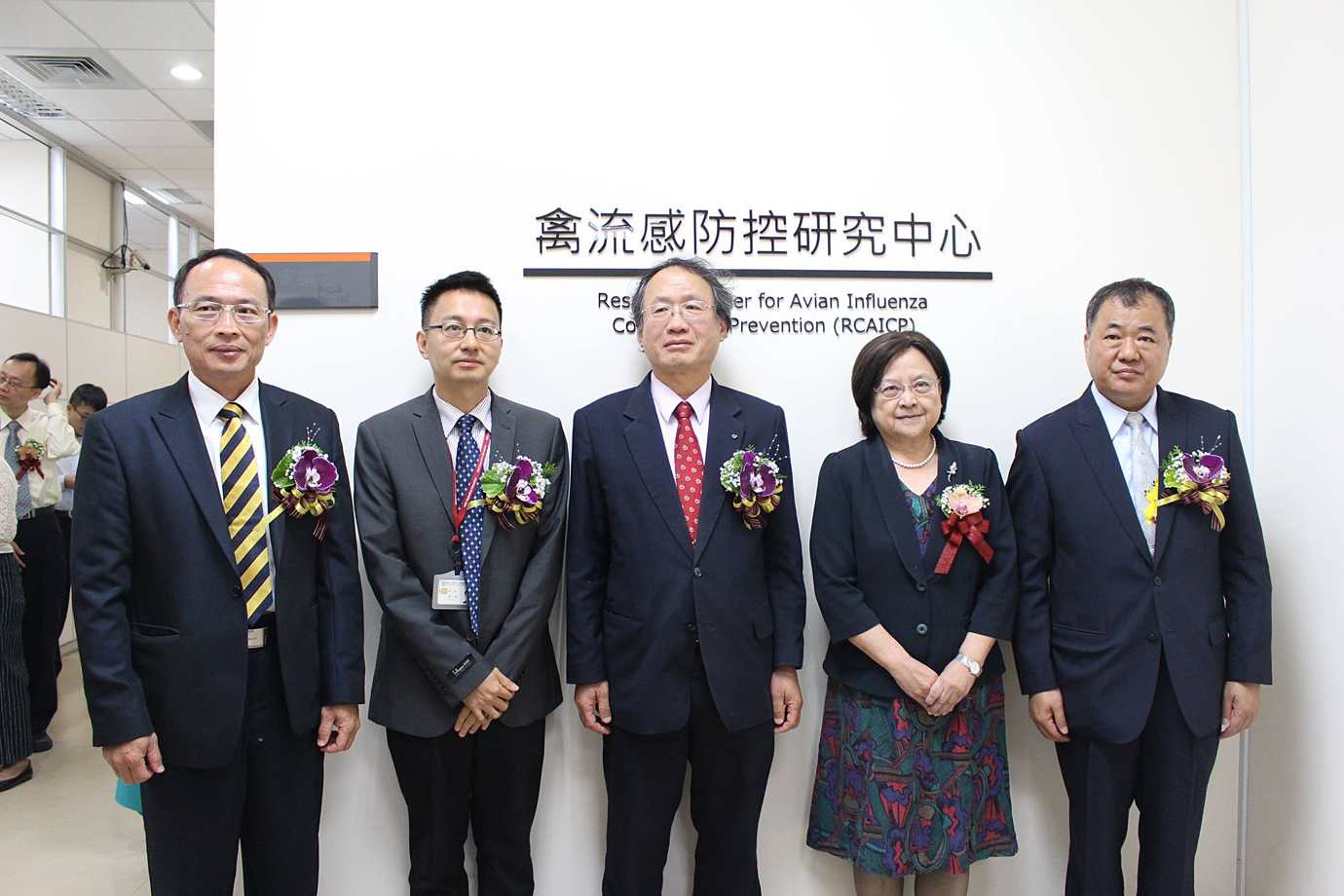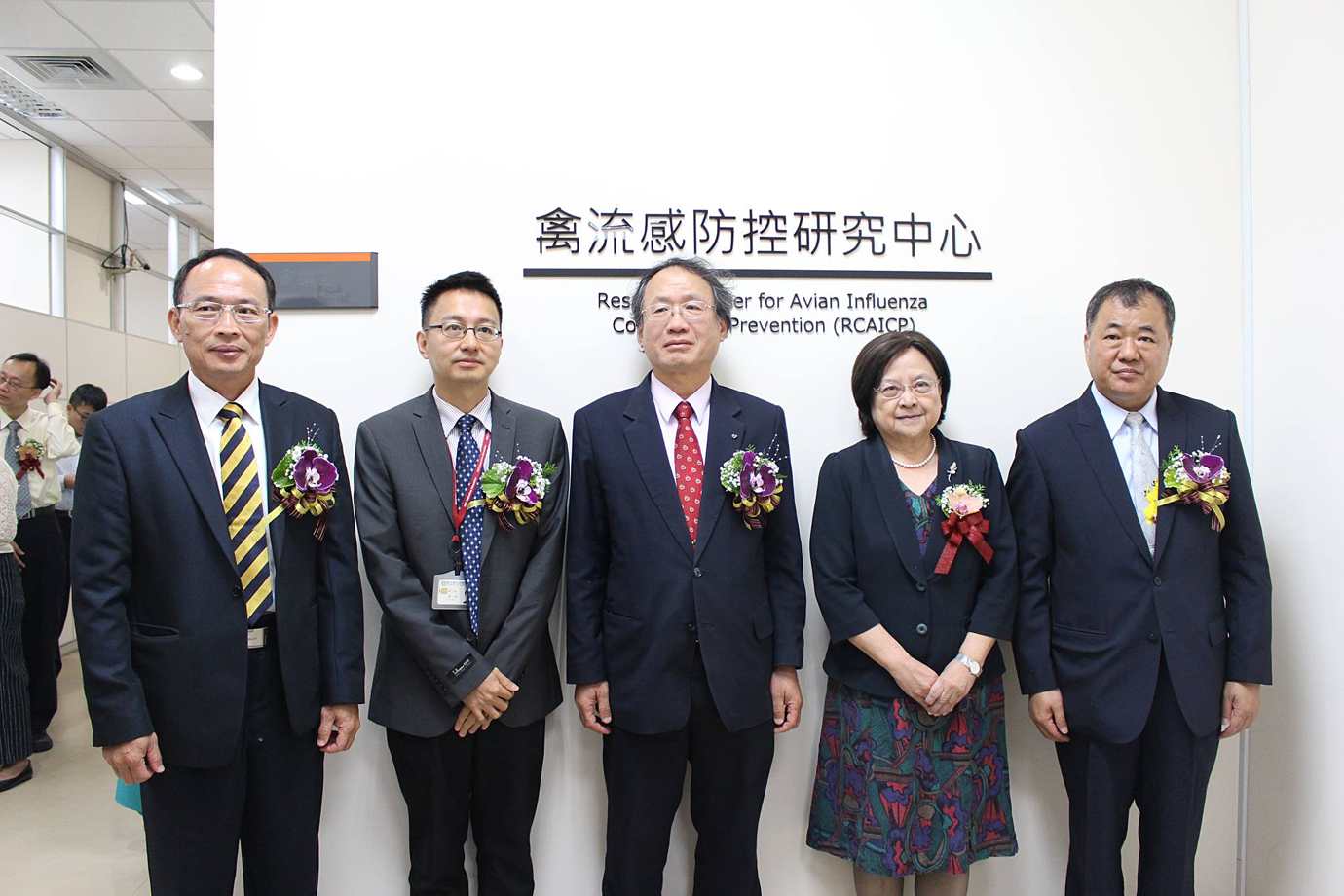Bird flu Prevention and Control Research Center officially unveiled! Big data monitors high-risk areas and establishes epidemic prevention model
Share268 + 1 Tweet EmailShares 268
In the face of the continuous outbreak of bird flu crisis in China, the Prevention and Inspection Bureau of the Council of Agriculture has set up a "Avian Influenza Prevention and Control Research Center," hoping to use big data's analytical model to strengthen monitoring of high-risk areas and establish a model for bird flu epidemic prevention. Huang Jincheng, vice chairman of the Council of Agriculture, said that after two years of efforts, Taiwan has eliminated the bird flu viruses H5N3, H5N8, and H5N6, and only H5N2 remains in the environment. However, he also stressed that H5N6 with the risk of bird-to-human transmission still exists in China, Japan, South Korea, and other places, and may be brought into Taiwan through the migration of migratory birds and the movement of people, and should not be taken lightly.
The Prevention and Inspection Bureau of the Council of Agriculture held the opening ceremony of the "Avian Influenza Prevention and Control Research Center" on the 12th, which cooperated with the Department of Disease Control of the Ministry of Health, the Animal Husbandry Department of the Council of Agriculture, the Animal Hygiene Laboratory, and the Agricultural Laboratory. The main objectives are "strengthening the industrial physique to facilitate the elimination of avian influenza virus", "monitoring and analysis of avian influenza virus", "strengthening avian influenza response technology and epidemiological analysis", and "prevention and control of avian influenza transmission from person to person".


The Prevention and Inspection Bureau of the Council of Agriculture held the opening ceremony of the "Avian Influenza Prevention and Control Research Center" on the 12th (Photo / Liu Yixin)
Jincheng: Taiwan has only H5N2 residual environment, and there are only 89 cases of bird flu this year.
Jincheng points out that at present, Taiwan has eliminated the avian influenza viruses H5N3, H5N8, and H5N6, but H5N2 remains in the environment. "after two years, H5N2 has not been eradicated because the attenuated strain that came in in 2003 and the virulent strain that came in in 2015 co-exist in the environment." After the attenuated strain infects birds, there is no anomaly, so it is difficult to control the epidemic.
However, Huang also stressed that from the beginning of this year to last week, there were only 89 cases of bird flu. "the measures implemented in the past two years have been effective to control the epidemic."
Big data of Avian Influenza Prevention and Control Research Center analyzes high-risk areas
In order to further accurately and pre-prevent the bird flu epidemic, the "Avian Influenza Prevention and Control Research Center" uses a visual information system to integrate the past bird flu epidemic situation in Taiwan, the international epidemic trend, and to estimate the high-risk areas of bird flu. Cai Jingping, an associate researcher at the Academy of Agricultural Sciences and a representative of the Avian Influenza Prevention and Control Research Center, explains that the data include "dynamic distribution of the bird flu epidemic," immediate monitoring of the spread of the epidemic, and "statistics of bird flu cases." it includes the ranking of outbreaks in different poultry species, different counties and cities, and townships, as well as the growth and decline of outbreaks in different regions in different years and months.
In addition, the "Avian Influenza risk Analysis and early warning Map" uses the data of past avian influenza cases, combined with the geographic information system, coupled with indicators such as the density of registered poultry farms, the density of unregistered waterfowl farms, the heterogeneous ratio of the number of waterfowl farms and land poultry farms, and the coverage rate of non-rice crops, to identify high-risk areas of avian influenza and strengthen surveillance operations. From this, it can be estimated that Taiwan's high-risk areas are concentrated in 22 townships and towns in Pingtung, Kaohsiung, Yunlin, Changhua and Tainan.
Jincheng pointed out that through the risk analysis of the prevention and control center, we can accurately grasp the high-risk areas. In the face of the high-risk period of bird flu in winter, this year we will adopt a different approach to deal with the epidemic situation than in previous years. For waterfowl, breeder chickens, laying hens, native chickens, and so on, surveillance will be strengthened for high-risk areas. In particular, egg farms and breeder farms often mix old, middle-aged and young people, which has become an industrial model. It is hoped that surveillance will be strengthened to effectively reduce the epidemic situation.
Huang further explained that in the past, although high-risk areas could be estimated according to feeding density and outbreak frequency, "it was probably Kouhu and Dongshi in Yunlin County." However, through the gathering of past data through the epidemic Prevention Center this year, big data was able to analyze the epidemic situation more accurately and carefully, and set up a set of high-risk regional stage treatment model.
The migration of migratory birds and the movement of people may bring avian influenza virus abroad.
In the face of the looming outbreak of bird flu, Jincheng explains that there are still different bird flu viruses in Taiwan's neighboring countries, including H5N6, H7N9, and H5N1. These viruses may still enter Taiwan with the movement of migratory birds and people, and special attention will be paid to this part.
Does the risk of bird-to-human transmission still exist this year? Huang responded that H7N9 is most likely to have bird-to-human transmission, and last year there were cases in which Taiwanese were infected in China and returned to China. However, H7N9 has not yet evolved to spread directly from person to person, and the risk is limited to people who are in direct contact with poultry.
In addition, there is also a risk of bird-to-human transmission of H5N6. Although Taiwan has already eliminated the virus and there have been no cases for more than a year, the virus still exists in China, Japan and South Korea, and may be spread through the migration of migratory birds. Based on the frequent movement of people on both sides of the strait, migratory birds and other factors, the risk of bird-to-human transmission has always existed.
Luo Yijun, deputy director of the Department of Disease Control and Prevention of the Ministry of Health and Welfare, points out that the main purpose of the Ministry's participation in the Center for Prevention and Control is to grasp the problem of human and poultry infection, and the greatest risk comes from poultry farmers, transportation personnel, market operators, and so on, targeting people who have been infected with bird flu. Do serum antibody research.
In addition, inspection units must also be constructed to avoid the occurrence of poultry-to-human transmission incidents, the examination is all concentrated in the central laboratory, delaying the time of epidemic prevention operations. Through the cooperation of the Center for Prevention and Control, we can immediately grasp the epidemic situation, and we will be able to better understand the mode of operation of the industry and grasp the potential people who may be infected.
The bird flu outbreak period is approaching. Based on the analysis of historical data, the "Avian Influenza Prevention and Control Research Center" also suggested that in addition to annual routine surveillance, enhanced measures must be established for high-risk poultry breeds and areas. It includes intensive monitoring of duck farms before slaughtering, collection of at least 60 local chicken farms in high-risk counties and cities, active monitoring of 360 egg farms in the whole year, priority detection of antibody positive breeder farms, and so on.
Share268 + 1 Tweet EmailShares 268
- Prev

Li Jianwei/Sake Heart 02: How to Brew Japanese Sake? Rice, water and bacteria dance together
Li Jianwei/Sake Heart 02: How to Brew Japanese Sake? Rice, water and bacteria dance together
- Next

All-day Logistics Taitung Station opens County Mayor Huang Jianting to assist in the sale of agricultural, fishery and livestock products
In order to integrate the island-wide cold chain and support the sales of local agricultural products in Taitung, the National Cold Chain Logistics Factory-All Day Logistics Co., Ltd. participated in the Taitung County Government's investment in the construction of Taitung Logistics Transfer Station. Yesterday (11), the opening ceremony was held. Taitung County...
Related
- A course of planting techniques and methods on how to grow carrots
- How to plant the latest tulips?
- Is it better to pick tea in the morning or in the afternoon? When is the best time for tea to be picked? what is the third or fifth tea?
- Launch Yuanxiao Happy combination Haocha + Tea Yuan healthy Taste
- Penghu Tourism "Fireworks 20 Parade with You"
- 2022 West Lake Happiness holds "Digital Revitalization Voucher" and draws iphone13 and laptop.
- Banqiao Fuzhou social houses are designed to change start-up combined with police elimination to create a safe and livable environment
- The convenient measure of "mechanical weeding" in Xinbei has been abused and the Agriculture Bureau has imposed heavy penalties on the illegal land consolidation.
- Changgeng University Joins Hands with Four Memory Factories to Rescue Memory Talent Shortage
- The list of Taiwan's top 100 MVP managers is listed by the Director-General of the Farmers' Association of Sanxia District.

